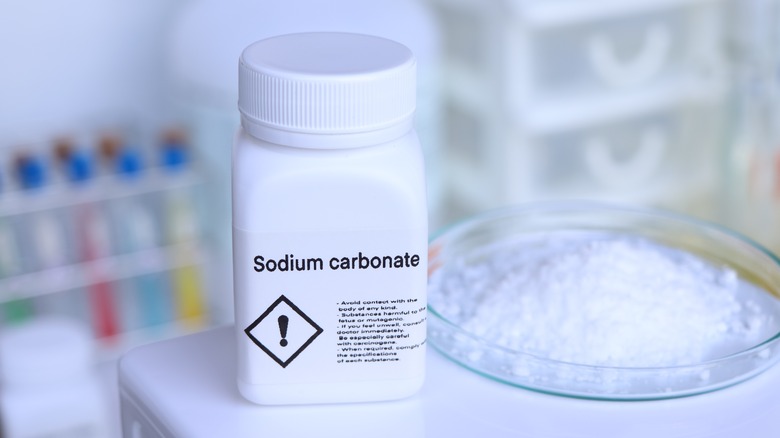Ubiquitous in most cleaning hacks, both washing soda (sodium carbonate) and baking soda (sodium bicarbonate) are cost-effective and eco-friendly alternatives to keep your home and garden spotless and fresh. However, don’t let the mere difference of ‘bi’ in their names fool you into thinking the two common household items are the same. They’re distinctive in several ways, including appearance, chemical properties, and, to an extent, even their end uses.
While both are worthy cleaning agents, their effectiveness varies greatly. Being the more alkaline of the two, washing soda has a far easier time neutralizing the acidic and greasy stains on unclean items, especially laundry. In contrast, sodium bicarbonate is more suited to mild cleansing, and baking soda has quite a few unexpected uses. Though both powders are colored white or similar, washing soda has bigger granules, making it more abrasive and requiring more protection than the fine particles of baking soda, which are gentler and edible.
Washing soda works best on tough stains

Derived literally from sodium soil-grown plants’ cinders, thereby earning its ‘soda ash’ moniker, washing soda is a highly alkaline (11.4 pH) white powder, popular for its industrial applications like glass manufacturing. However, lately, it’s earned a reputation as a ‘laundry booster’ in households, capable of dissolving the most stubborn stains and odors. This basic solution swiftly breaks down the fatty oils and acids present in dirty marks, making them highly effective for your clothes. It further supplements detergent action in hard water by fusing with waterborne minerals that can inhibit the cleaning process.
However, soda ash’s intensive cleansing properties aren’t restricted to laundry. It works just as well on upholstery, carpets, furniture, home utensils, and metal items like grills and ovens — at times dissolving the accumulated rust, too. But its large, white crystals are highly corrosive and can damage both your hands and metal surfaces. So, ensure you handle washing soda wearing gloves and avoid its use on products you’d rather not be scratched, like the ones made of fiberglass and aluminum. Also, the tasteless powder isn’t safe for consumption, but is surprisingly good at treating a rose plant’s black spots and deterring aphids from your garden.
Baking soda is more versatile
On the other hand, baking soda, the widely popular leavening agent that is safe to inhale after baking, but not before it, has moved beyond its cooking applications. Derived by processing the heavily mined Trona deposits, sodium bicarbonate is a fine, solid white powder with an 8.4 pH level. While still alkaline, it veers closer to the neutral zone than washing soda, meaning it isn’t as effective, limiting its use to more mild cleansing. So, it will clean and deodorize your laundry but will do a poor job of removing stubborn grime.
However, its gentleness comes in handy for scrubbing soft surfaces that are sensitive to scratches. It also lends baking soda versatility, expanding its usage to polishing silver articles, washing bathroom tiles and ceilings, and wiping down mattresses. It has even earned a place in personal care, including as dentifrice. Moreover, as the powder is non-toxic to humans and pets, it can be safely sprinkled around the kitchen, including in the refrigerator, and over the cutting boards and counters. It also works like a charm as an antacid when you’ve gorged on too many chocolate cupcakes.